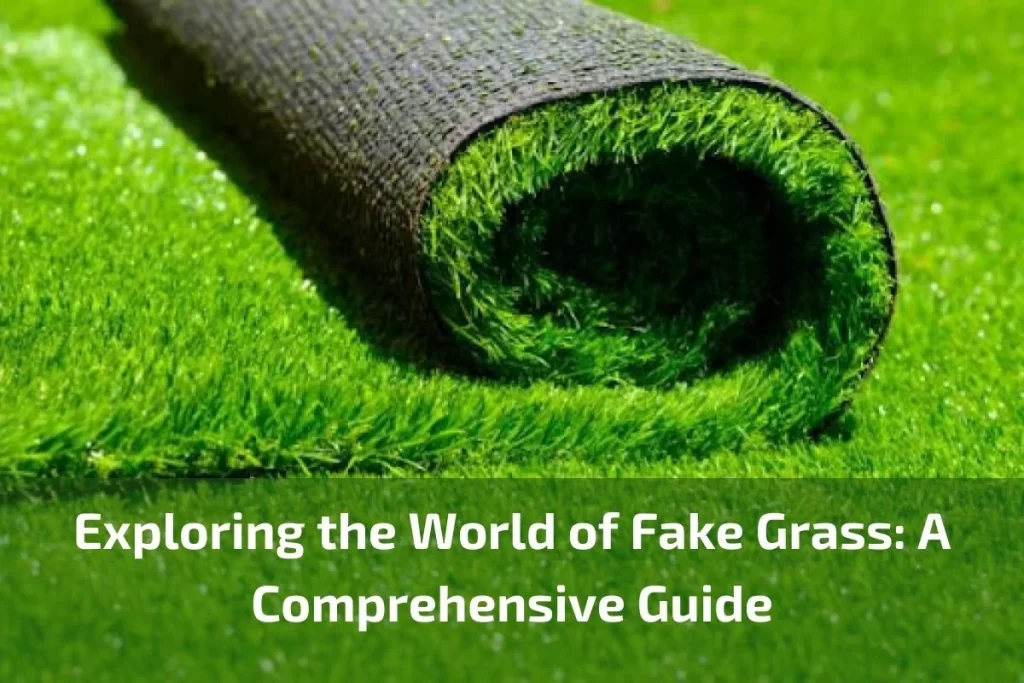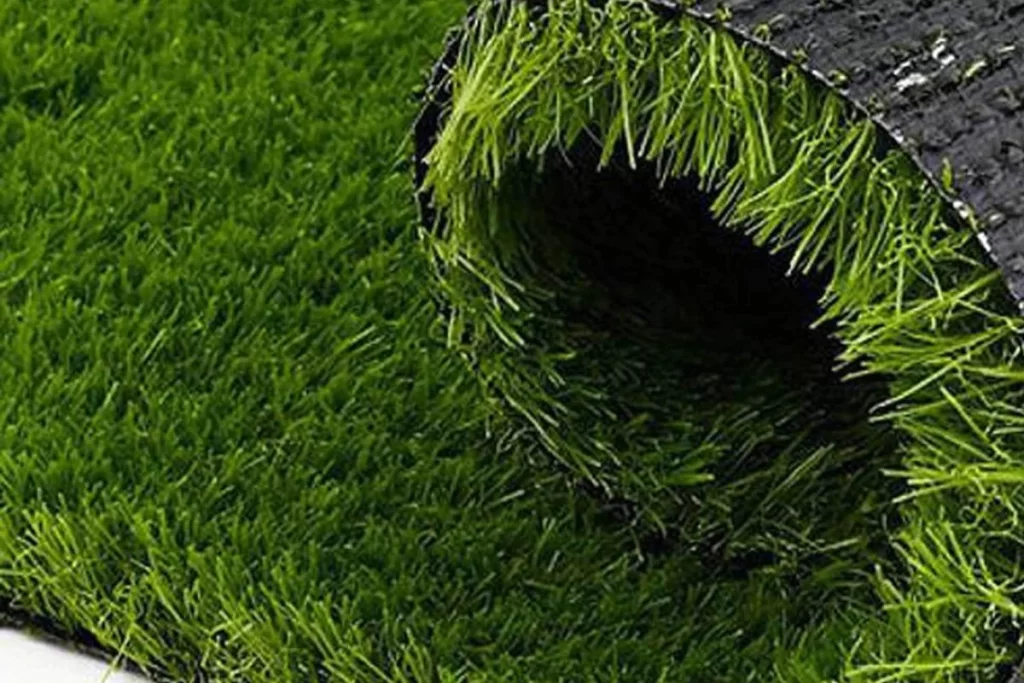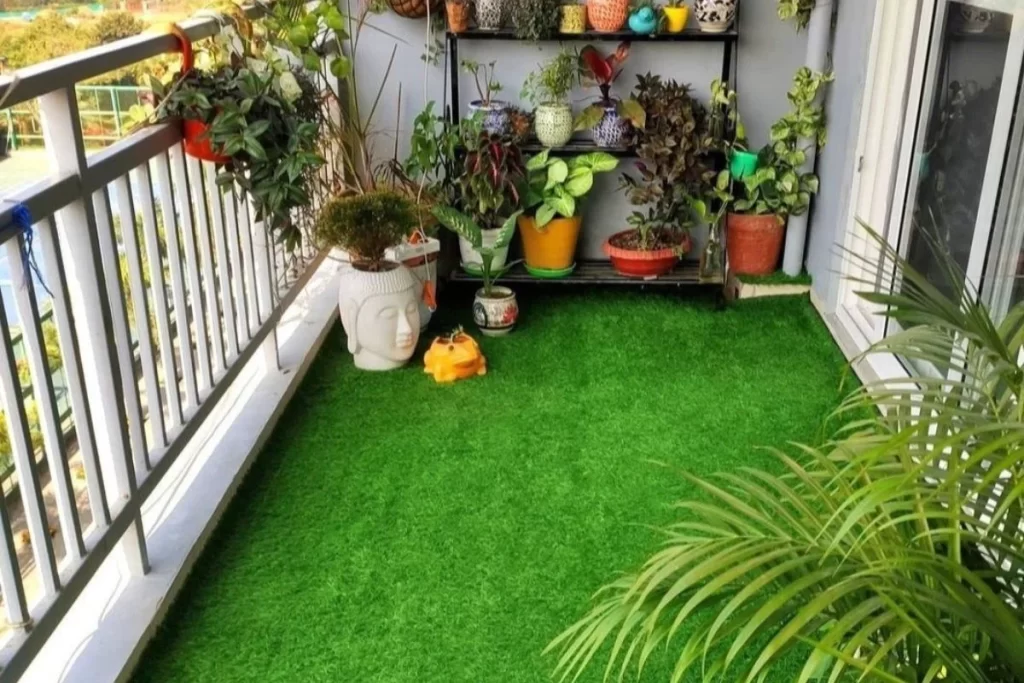
Welcome to the comprehensive guide on exploring the world of fake grass. In recent years, synthetic turf, often referred to as fake grass, has gained immense popularity as a viable alternative to traditional natural grass lawns. As homeowners, businesses, and communities seek sustainable, low-maintenance landscaping solutions, fake grass has emerged as a compelling option that offers both aesthetic appeal and practical benefits.
In this guide, we will delve into the fascinating realm of fake grass, exploring its origins, composition, benefits, installation process, maintenance requirements, and much more. Whether you’re considering transforming your backyard, revamping your commercial property, or simply curious about the possibilities of synthetic turf, this guide aims to provide you with the knowledge and insights needed to make informed decisions.
What is Fake Grass?
Fake grass, also known as synthetic turf or artificial grass, is a man-made alternative to natural grass that has gained popularity for landscaping, sports fields, and recreational areas. Unlike natural grass, which requires regular maintenance such as mowing, watering, and fertilizing, fake grass offers a low-maintenance and visually appealing solution for outdoor spaces.
Definition and Composition:
Synthetic Fibers: Fake grass is typically made from synthetic fibers, usually polyethylene or polypropylene, which are designed to mimic the appearance and texture of natural grass blades.
Backing Material: The synthetic fibers are attached to a backing material, often made of polyurethane or latex, which provides stability and support for the grass surface.
Infill Material (Optional): Some fake grass installations may include an infill material, such as silica sand or rubber granules, which helps to support the fibers, improve drainage, and provide additional cushioning.
Evolution of Fake Grass:
Early Developments: The concept of artificial grass dates back to the mid-20th century, with early versions of synthetic turf primarily used for sports fields and stadiums.
Technological Advancements: Over the years, significant advancements in materials and manufacturing techniques have led to the development of more realistic and durable fake grass products.
Versatile Applications: Today, fake grass is used in a variety of settings, including residential lawns, commercial landscapes, playgrounds, golf courses, and athletic fields.
Common Misconceptions:
Unnatural Appearance: One common misconception about fake grass is that it looks obviously artificial. However, modern synthetic turf products closely resemble the color,
texture, and movement of natural grass.
Environmental Impact: Another misconception is that fake grass is harmful to the environment. While synthetic turf production does have environmental considerations, such as energy consumption and waste generation, fake grass can offer environmental benefits in terms of water conservation and reduced chemical usage compared to natural grass lawns.

Benefits of Fake Grass
Fake grass, also known as synthetic turf or artificial grass, offers a multitude of advantages that make it a popular choice for landscaping, sports fields, and recreational areas. From its low-maintenance nature to its environmental benefits, fake grass presents numerous compelling reasons for homeowners, businesses, and communities to consider incorporating it into their outdoor spaces. Here are some of the key benefits of fake grass:
Low-Maintenance Landscaping:
To prevent the growth of bacteria and fungi, some synthetic turf products may feature anti-microbial coatings applied to the turf fibers or backing material. These coatings help maintain a clean and hygienic surface, especially in high-traffic areas.
No Mowing: Unlike natural grass, fake grass does not require regular mowing to maintain its appearance, saving homeowners time and effort spent on lawn maintenance.
Minimal Watering: Fake grass does not need regular watering to stay green and lush, helping to conserve water resources and reduce water bills.
No Fertilizing or Pesticides: Synthetic turf eliminates the need for fertilizers, pesticides, and herbicides, creating a safer and healthier environment for children, pets, and wildlife.
Year-Round Beauty:
All-Season Appeal: Fake grass remains green and vibrant throughout the year, regardless of seasonal changes or weather conditions, providing homeowners with a consistently beautiful landscape.
Resilience to Wear and Tear: Synthetic turf is designed to withstand heavy use and foot traffic, maintaining its appearance and performance over time without becoming worn or patchy.
Durability and Longevity:
High-Performance Materials: Fake grass is constructed from durable synthetic fibers and backing materials that are engineered to resist fading, matting, and deterioration from UV exposure.
Long Lifespan: With proper installation and maintenance, synthetic turf can last for many years, providing homeowners with a long-term landscaping solution that retains its aesthetic appeal and functionality.
Water Conservation:
Reduced Water Usage: By eliminating the need for regular watering, fake grass helps conserve water resources, particularly in regions prone to drought or water restrictions.
Environmentally-Friendly Alternative: Synthetic turf reduces the environmental impact associated with traditional grass lawns, including water consumption, chemical runoff, and greenhouse gas emissions from lawn equipment.
Allergy-Friendly Landscaping:
Pollen-Free Environment: Fake grass creates a pollen-free outdoor space, making it an ideal option for individuals with allergies or respiratory sensitivities.
Reduced Allergens: Synthetic turf minimizes the presence of allergens such as pollen, grass clippings, and mold spores, providing a cleaner and healthier environment for outdoor activities.
Choosing the Right Fake Grass
Selecting the appropriate fake grass for your landscaping project is crucial to achieving the desired aesthetic, functionality, and longevity of your outdoor space. With a variety of synthetic turf options available on the market, it’s essential to consider several factors to ensure that you choose the right fake grass for your specific needs and preferences. Here are some key considerations to keep in mind when selecting fake grass:
Factors to Consider:
Pile Height: Fake grass comes in various pile heights, ranging from short to tall fibers. Consider the intended use of the synthetic turf and your personal preference for appearance when selecting the pile height.
Density: The density of fake grass refers to the number of fibers per square inch. Opt for a turf with higher density for a more lush and natural appearance.
Color Options: Synthetic turf is available in a wide range of colors, including shades of green and brown. Choose a color that complements your landscaping design and blends well with the surrounding environment.
Blade Shape: Synthetic turf fibers may feature different blade shapes, such as flat, C-shaped, or diamond-shaped. Consider the desired look and feel of the fake grass when selecting the blade shape.
Backing Material: Pay attention to the quality and composition of the backing material, which provides stability and support for the synthetic turf. Look for a durable backing material that can withstand heavy use and environmental conditions.
Infill Options: If you opt for an infilled fake grass system, consider the type of infill material used and its impact on performance, drainage, and safety.
Budget: Determine your budget for the fake grass installation, including the cost of materials, labor, and any additional accessories or services.
Selecting the Right Synthetic Turf:
Residential Use: For residential landscapes, choose fake grass that offers a balance of durability, aesthetics, and comfort. Consider softer fibers and higher pile heights for areas
where children and pets will play.
Commercial Use: For commercial applications, prioritize synthetic turf with high durability and resilience to heavy foot traffic and use. Select turf products with shorter fibers and higher density for a professional and well-maintained appearance.
Recreational Use: When installing fake grass for sports fields or recreational areas, opt for turf designed specifically for athletic performance and safety. Look for turf with adequate shock absorption, traction, and durability to withstand rigorous activities.
Understanding Warranty and Maintenance Requirements:
Review the warranty provided by the manufacturer for the fake grass product, including coverage for defects, fading, and wear and tear.
Familiarize yourself with the recommended maintenance practices for the synthetic turf, including brushing, grooming, and periodic cleaning to ensure optimal performance and longevity.
Installation Process for Fake Grass
Installing fake grass requires careful planning, preparation, and attention to detail to ensure a successful and long-lasting outcome. Whether you’re transforming your backyard, revamping a commercial property, or creating a sports field, following a systematic installation process is essential for achieving the desired results. Here’s a step-by-step guide to the installation process for fake grass:
Preparing the Site:
Clear the Area: Remove any existing vegetation, debris, rocks, and other obstacles from the site to create a clean and level surface for the fake grass installation.
Grade the Surface: Use a grading tool or machinery to ensure that the ground is properly leveled and graded to promote proper drainage and prevent water pooling.
Address Drainage: Install a suitable drainage system, such as perforated pipes or drainage channels, to facilitate proper water drainage away from the fake grass surface.
Installing the Base:
Apply Base Material: Spread a layer of crushed rock or decomposed granite as the base material for the fake grass. Compact the base material using a compactor or roller to create a stable and firm foundation.
Add a Weed Barrier: Install a weed barrier fabric over the compacted base material to prevent weed growth and ensure a clean and weed-free surface for the fake grass.
Optional Shock Pad: If desired, install a shock-absorbing pad layer over the weed barrier to provide additional cushioning and impact absorption, especially for sports fields or play areas.
Installing the Fake Grass:
Roll Out the Turf: Unroll the fake grass rolls across the prepared surface, ensuring that the turf fibers are facing in the desired direction and properly aligned.
Trim and Shape: Cut the fake grass rolls to fit the dimensions of the installation area using a utility knife or turf cutter. Trim any excess turf along the edges to create clean and precise seams.
Seam Installation: Join the seams of the fake grass rolls using adhesive tape or glue designed specifically for synthetic turf installations. Ensure that the seams are tightly sealed
to prevent separation or shifting over time.
Secure Edging: Install perimeter edging along the edges of the fake grass installation to secure the turf in place and prevent it from shifting or curling.
Infill Application: If using infill material, evenly spread the infill over the fake grass surface
Finishing Touches:
Grooming and Brushing: Use a power brush or broom to groom the fake grass fibers and evenly distribute the infill material throughout the turf surface.
Watering and Settling: Lightly mist the fake grass surface with water to help the turf fibers settle and activate the infill material, ensuring proper compaction and stability.
Final Inspection: Conduct a thorough inspection of the fake grass installation, checking for any visible seams, wrinkles, or imperfections. Make any necessary adjustments or repairs to achieve a flawless finish.

Maintenance Tips and Best Practices Fake Grass
Proper maintenance is essential for preserving the appearance, functionality, and longevity of fake grass surfaces. While synthetic turf requires less maintenance compared to natural grass, regular care and attention are still necessary to ensure optimal performance and aesthetics. Here are some maintenance tips and best practices for fake grass:
Regular Cleaning:
Remove Debris: Use a leaf blower, rake, or stiff-bristled broom to remove leaves, twigs, and other debris from the fake grass surface regularly.
Pet Waste Removal: Promptly remove solid pet waste from the fake grass and rinse the affected area with water to prevent odors and staining.
Weed Control: Inspect the fake grass surface periodically for weed growth and manually remove any weeds or unwanted vegetation to maintain a clean and pristine appearance.
Brushing and Grooming:
Brushing: Use a power brush or stiff-bristled broom to brush the fake grass fibers against the grain periodically. This helps to lift and fluff up the turf fibers, preventing matting and maintaining a natural appearance.
Grooming: Use a specialized grooming rake or brush designed for synthetic turf to remove debris, redistribute infill material, and maintain the resilience and uniformity of the fake grass surface.
Stain Removal and Odor Control:
Spills and Stains: Address spills and stains on the fake grass surface promptly by rinsing the affected area with water and mild detergent. For stubborn stains, use a synthetic turf cleaner or vinegar solution to spot-clean the area.
Odor Control: To eliminate pet odors and prevent bacterial growth, apply a pet odor neutralizer or enzyme-based cleaner to the fake grass surface as needed.
Inspections and Repairs:
Regular Inspections: Conduct regular inspections of the fake grass surface to identify any signs of wear, damage, or unevenness. Pay attention to areas of high foot traffic or potential drainage issues.
Seam Repairs: Inspect the seams of the fake grass rolls for signs of separation or lifting. If necessary, reapply adhesive tape or glue to reinforce the seams and prevent further damage.
Edging Maintenance: Check the perimeter edging of the fake grass installation to ensure it remains secure and intact. Replace any damaged or loose edging materials to prevent turf shifting or curling.
Seasonal Maintenance:
Spring Cleaning: Conduct a thorough spring cleaning of the fake grass surface, including brushing, grooming, and inspecting for any winter damage or debris buildup.
Fall Maintenance: Remove fallen leaves, pine needles, and other organic matter from the fake grass surface to prevent moisture retention and mold growth during the winter months.
Winter Preparations: Minimize foot traffic on the fake grass surface during the winter season to prevent compaction and damage to the turf fibers. Use caution when removing snow and ice to avoid damaging the synthetic turf.
Conclusion
In conclusion, fake grass offers a practical, sustainable, and visually appealing alternative to natural grass for landscaping, sports fields, and recreational areas. Through its low-maintenance nature, year-round beauty, and durability, fake grass provides homeowners, businesses, and communities with a versatile solution that enhances outdoor spaces while minimizing environmental impact.

